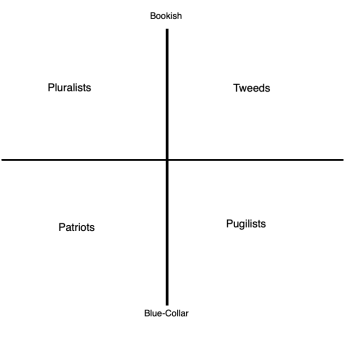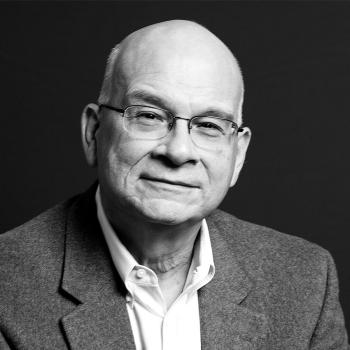 If you’ve picked up a volume of “literary” fiction in the past decade or so—preferably one that drew favorable coverage in the New York Review of Books or snuck its way onto the Man Booker longlist—you’re probably already familiar with the phenomenon of the “MFA novel.” Strictly speaking, of course, one does not need to have the degree to write such a book. It is a matter of style and tone rather than a rigid descriptor, reflecting the distinctive mode of writing selected for by both elite educational institutions and an increasingly insular publishing ecosystem.
If you’ve picked up a volume of “literary” fiction in the past decade or so—preferably one that drew favorable coverage in the New York Review of Books or snuck its way onto the Man Booker longlist—you’re probably already familiar with the phenomenon of the “MFA novel.” Strictly speaking, of course, one does not need to have the degree to write such a book. It is a matter of style and tone rather than a rigid descriptor, reflecting the distinctive mode of writing selected for by both elite educational institutions and an increasingly insular publishing ecosystem.
The MFA novel is typically brief rather than epic, loath to channel the experiences of anyone beyond the author herself. Its plot is wispy and ill-defined, with its meandering storylines periodically punctuated by episodes of bad sex, substance abuse, reflections on the allure of suicide, gazes into the abyss of social media, and ruminations on impending climate apocalypse. One thinks of Sally Rooney, Lauren Oyler, Ottessa Moshfegh, Jenny Offill, and countless others—all very talented writers, to be clear, but all engaged in very similar projects. The dominant sensibility of the MFA novel is what Elif Batuman described in 2010 as an impulse to make literature into “an unhappiness contest, or an unhappiness-entitlement contest.”
The influence of the MFA novel—or, more precisely, the style of storytelling it exemplifies—has spread far beyond bookstore shelves and culture websites. Perhaps most notably, it’s a sensibility that shows up across the various streaming video series usually classed as “prestige TV.” How else to classify the moody, shoegazy character studies that constitute HBO’s I May Destroy You, or Amazon Prime’s Fleabag, or Hulu’s The Bear?
Batuman and plenty of other writers have criticized this turn in storytelling for its self-doubt, its chic nihilism, and its parochialism. But perhaps there’s a deeper issue in play here.
In a kind of enantiodromia, the ubiquity of the “MFA novel” and its mixed-media progeny may have produced and cemented the dominance of an opposite form of storytelling: the mystery-box narrative. Despite its near-omnipresence throughout popular culture, this kind of story is only rarely recognized as such. Or, perhaps, that is precisely why it remains so invisible.
Famously associated with film director J.J. Abrams, the mystery-box narrative launches the reader or viewer into the story in medias res, with the protagonist’s context and circumstances left deliberately unclear. As the story unfolds, the hero or heroine learns more about his or her own background, and about the “rules” and internal logic of the universe around them.
Abrams’s own work, of course, is suffused with this approach. Tasked with crafting the seventh Star Wars film, Abrams opens that movie by declining to explain precisely how the galaxy tipped from its post-Return of the Jedi equilibrium back into open warfare. He leaves his heroine’s parentage ambiguous, shuffles the beloved Luke Skywalker almost entirely offscreen, and makes his archvillain a smoke-shrouded figure of unclear significance. Whereas in 1977, George Lucas felt the need to spell out backstory in a lengthy title crawl, here the opening crawl serves primarily to obfuscate.
All of this, of course, is calculated to generate that most elusive of reactions: solid word-of-mouth and fan engagement. For popular movies and shows, vast fan communities now stretch across the internet, generating massive Reddit threads and page after page of dedicated messageboards devoted to speculating about plot points. Creators now know that split-second allusions to obscure elements of “lore”—the enormous corpus of backstory generated by decades-old franchises—will be obsessed over for years by super-fans. A prime example of this is the TV show Westworld, which has derived most of its punch from its heavy reliance on asynchronous timelines as a source of mystery, and that regularly sparks feverish online debate.
The mystique of the mystery box has come to dominate pop culture. Just consider the near-maniacal fear of “spoilers” that overtakes the internet upon release of a much-anticipated genre film. This concern is historically novel: years ago, film trailers would lay out the movie’s entire plot, including the ending—a choice that didn’t deter audiences from showing up. The element of surprise, in other words, wasn’t the only element that mattered.
And what happens when the other elements start to drop out? In the work of fantasy novelist Brandon Sanderson, mystery-box storytelling reaches its apex. The Stormlight Archive, Sanderson’s as-yet-unfinished magnum opus, painstakingly unspools its story across a series of colossal, thousand-page volumes—volumes that would be virtually unreadable, if Sanderson didn’t artificially generate plot momentum by withholding crucial background information from the reader.
As the Archive develops, its two lead characters slowly drift through the events of a fantastical world, picking up scraps of knowledge about the cataclysm that rocked their cosmos long ago and repristinating elements of pre-cataclysm wisdom. Protagonists spend page after page brooding over their own uncertainty, as they puzzle out the mysteries around them—mysteries that readers know will eventually be disclosed, when the author finally deems it convenient. But properly speaking, the internal logic of the narrative doesn’t demand this drip-feed of backstory, leaving the “mystery” increasingly feeling like an excuse for bad pacing. Indeed, if the “rules” and backstory of Sanderson’s fictional universe were laid out in a couple of pages, the justification for the series’ sheer bulk would collapse: Sanderson’s prose and character development, considered apart from the mystery-box milieu, aren’t especially strong. (Contrast this approach with J.R.R. Tolkien, who had no qualms about spelling out the logic of his legendarium from the outset, or Patrick Rothfuss, whose novels have a reverse-whodunit structure focused on how a foregone outcome will be achieved.)
The strange reality of contemporary American fiction, irrespective of medium, is that the MFA novel and the mystery-box narrative exist as a kind of cultural yin and yang—one ubiquitous in high culture and the other in popular entertainment, with each serving as a foil to the other. In the MFA novel, plot is nothing, a déclassé distraction from the virtuosity of the style and the nuances of the characters (or politics) on display. In the mystery-box narrative, plot is everything; stories become an interlocking mass of Chekhov’s guns and internal cross-references, where the greatest imaginable sin is a plot hole or a failure to “stick the landing.”
Despite their differences, though, these two currents share a common root. The singular virtue that both modes of storytelling select for is a kind of technical competence—for the MFA novel, the proficiency of a well-chosen phrase or memorable personality, and for the mystery-box narrative, the skill of revealing just enough information to keep the consumer hooked. Altogether out of view is whether a story corresponds to any kind of essential truth or universal experience. Rather, for the MFA novel, what matters is that a story captures someone’s truth; for the mystery-box narrative, “truth” is merely internal coherence.
In the end, both tendencies reflect a loss of faith—a loss of faith in storytelling as a means of access to anything beyond bare contingency. And yet it seems to me that the stories that linger are those penned by authors confident in their ability to say something true. Those creators might be wrong, but at least they are audacious enough to trust that their vision of the world can speak for itself.
Without that faith, a far gloomier, more forgettable media landscape awaits.












